Garden plants with red stems are a great way to add some color and visual interest to your garden. These plants come in a variety of shapes, sizes, and colors, making them an ideal choice for any type of garden setting. Whether you’re looking for a statement plant or something to simply brighten up your outdoor space, these plants will definitely add a special touch.
In this article, we’ll discuss some of the most popular garden plants with red stems and provide answers to some frequently asked questions about them. We’ll also give you a few useful tips on how to care for these plants so you can keep them looking vibrant and healthy all season long!
Sorbaria ‘Sem’
Sorbaria ‘Sem’ is a deciduous shrub that grows to around 4-6 feet tall. It has small, bright red stems that are covered in white flowers during the summer months. This plant is easy to care for and requires minimal pruning or trimming. Its unique color makes it an ideal choice when you want something eye-catching and out of the ordinary.[1]
Red Osier Dogwood
The Red Osier Dogwood is one of the most popular garden plants with red stems.
This species also produces white flowers in the springtime and edible blue fruit in the fall. It thrives in full or partial sun and prefers well-drained soil.[1]Virginia Creeper
Virginia Creeper is a popular garden plant with a vibrant red stem.
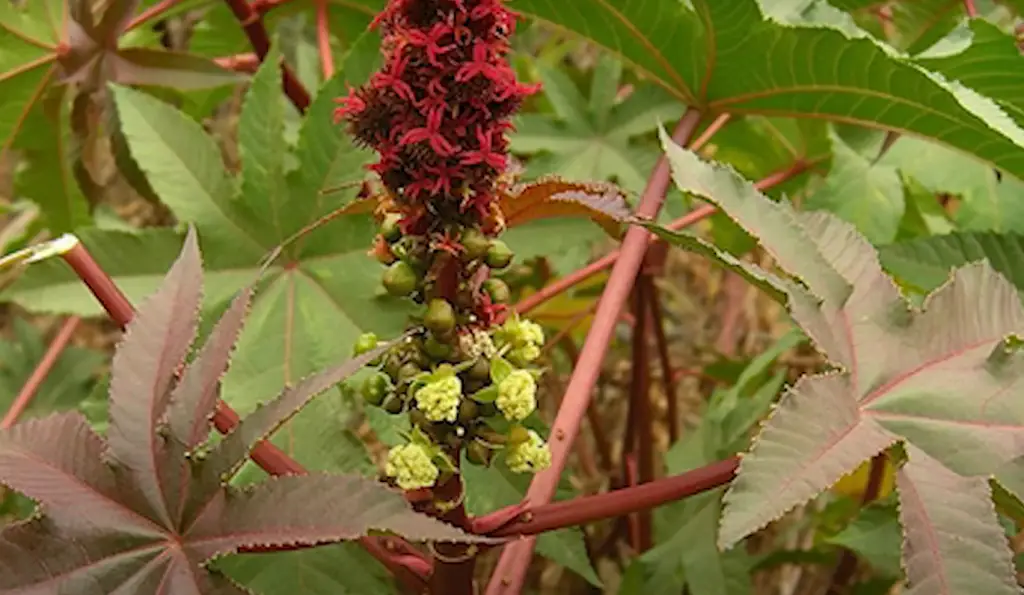
This climbing vine is incredibly hardy and can easily adapt to its environment, making it an ideal choice for those with varying levels of gardening experience. Not only do these plants add color to your garden, but they also provide some natural shade and coverage as well.[1]
Wings Of Fire
The beautiful Wings of Fire flowering shrub is a popular choice for gardeners looking to add some stunning red color to their gardens. Its striking, bright-red branches reach up to 6 feet tall and are adorned with clusters of star-shaped pink flowers in the summer months. This easy-care plant prefers full sun but can tolerate partial shade and requires minimal pruning.[1]
Bloody Stromanthe
The Bloody Stromanthe is a low-maintenance plant that’s perfect for adding color and texture to your garden. It has stunning red stems and bright green leaves, making it a great choice if you’re looking for a statement plant. This plant is relatively easy to care for and doesn’t require much maintenance, so it’s perfect for busy gardeners or those who don’t have much gardening experience.
Coral Bark Willow Tree
The Coral Bark Willow Tree is a popular choice for gardeners looking to add some red stems to their space.
It does require some upkeep, however, as the bright red bark can fade with age. To keep it looking vibrant and healthy, be sure to prune it regularly and mulch around the roots.Crimson Glory Vine
The Crimson Glory Vine is a stunning climber with large, red-tinged leaves and bright red stems. This vine is very low-maintenance and can quickly cover an arbor or trellis in the summer months for a beautiful display of color. The Crimson Glory Vine will thrive in full sun or part shade, but make sure to provide it with regular water to ensure healthy growth.
Bronze-Leaf Begonia
The bronze-leaf begonia is one of the most popular garden plants with red stems. It’s a low, sprawling plant with deep green and copper foliage that contrasts nicely with its bright red stems. This plant looks great in containers or as a groundcover and should be planted in well-drained soil.
Winged Spindle
The Winged Spindle is a deciduous shrub that can grow up to 15 feet in height. It produces stunning clusters of red flowers in spring and has bright green foliage throughout summer. The stems have attractive, deep-red bark which adds vibrant color to your garden all year long. This plant does best when planted in a sheltered spot with plenty of sunlight and moisture.
Elephant Bush
The Elephant Bush is a succulent with thick, fleshy red stems and long, glossy green leaves. It’s often used as an indoor houseplant due to its low maintenance needs, but it can also thrive in outdoor gardens.

This plant does need some protection from the wind and sun, so it’s best to grow it in a sheltered area of the garden.
Bromeliad
The bromeliad is a common houseplant that’s known for its bright red stems. The leaves of this plant are usually green or grey in color, and the flowers can be bright pink, yellow, or white. Bromeliads are easy to care for and require minimal maintenance – all they need is some occasional trimming and the occasional misting of water. [1]
Purple Amaranth
Also known as Pigweed, Purple Amaranth is an annual flowering plant that produces a beautiful red-purple color on its stems. It’s perfect for adding some drama to your garden and the flower heads can reach up to 12 inches in length. This plant requires full sun and well-draining soil to thrive and it will need to be watered regularly during the growing season. With proper care, you can expect to see blooms in late summer or early fall.[2]
Christmas Berry ‘Red Robin’
Christmas Berry ‘Red Robin’ is a popular garden plant with bright red stems. This evergreen shrub has glossy green leaves and small white flowers in the springtime. The young growth of this plant is yellowish-green, making it even more eye-catching. It’s typically used as a border or groundcover and can tolerate some light shade.
Japanese Barberry
The Japanese Barberry is a shrub-like plant that can reach up to 4 feet in height and has small, pointed leaves. It produces bright red stems that are perfect for adding a splash of color to any garden. This plant requires full sun and moist soil to thrive but is relatively low-maintenance.
Common Dogwood Varieties
Dogwoods are one of the most common varieties of plants with red stems. The flowers and foliage of these plants usually range from white to pink, and their stem color varies from light red to deep crimson. Some popular varieties include:
- Cornus sanguinea (Common Dogwood)–This variety is commonly used in gardens as a focal point or for edging. It has white flowers and glossy red stems that make it a beautiful addition to any garden.
- Cornus alba (Red-Twig Dogwood)–This variety is perfect for brightening up a shady garden area with its striking deep crimson red stems and small white flowers.
Purple Bergenia
The Purple Bergenia is one of the most popular garden plants with red stems. This lovely perennial has deep purple flowers and long, dark green foliage that contrasts nicely with its bright red stems. It blooms in late spring and early summer, making it a great choice for adding some seasonal color to your garden. The Purple Bergenia prefers full sun and well-drained soil and is easy to care for.
Mountain Pepper
Mountain Pepper is a popular garden plant with red stems that grows up to two meters in height and produces gorgeous clusters of white flowers.
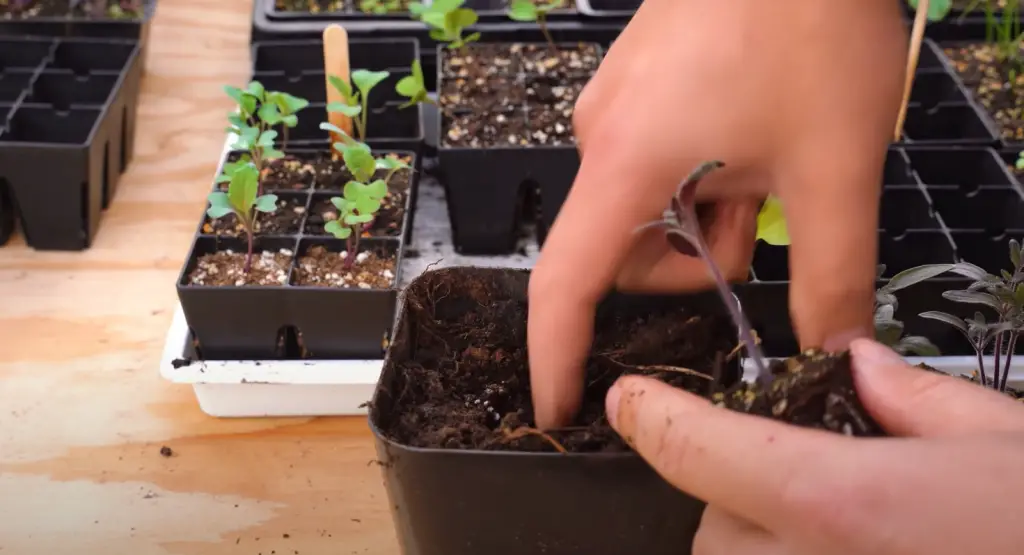
It’s known for its spicy aroma and flavorful leaves, making it an ideal addition to any salad or stir-fry dish. This plant loves full sun and requires regular watering during dry periods.
Elephant Bush (Portulacaria afra)
Elephant bush is a succulent shrub with thick, leathery leaves and red stems that can grow up to 24” tall. It’s native to South Africa, so it does best in warm climates where there isn’t much frost. When given the right conditions, it will produce small white flowers in the spring and summer months.
These plants are easy to care for and require minimal maintenance. They prefer a sunny spot with well-draining soil, and only need occasional watering during dry spells. When caring for your elephant bush, be sure to avoid over-watering as this can lead to root rot.
Peonies
Peonies are one of the most popular garden plants with red stems. These beautiful flowers come in a variety of colors, sizes, and shapes, making them a great choice for any garden setting. Peonies require minimal care to maintain their vibrant beauty; they should be planted in soil that drains well and given adequate water throughout the growing season. To encourage blooming, make sure to deadhead the spent blooms.
Common Purslane
Common purslane (Portulaca oleracea) is a great choice for anyone looking to add some color and texture to their garden. It grows best in full sun, though it can also tolerate partial shade. Purslane features succulent leaves that are bright green with reddish-purple stems. It’s an incredibly hardy plant and can tolerate a wide range of temperatures, from freezing to scorching. Common purslane also produces yellow flowers throughout the summer months that will attract bees, butterflies, and hummingbirds.
Pokeweed
Pokeweed is a classic garden plant with red stems. It’s native to North America and grows in moist, sunny areas. This plant produces clusters of small white flowers that eventually turn into dark purple berries. The berries are not edible for humans, but they can be attractive to wildlife such as birds and butterflies, making it a great addition to any wildlife garden. Pokeweed grows to be quite tall, so it’s best suited for the back of a garden bed.[2]
The Castor Bean
The castor bean is another popular garden plant with red stems. It’s a fast-growing annual that produces stunning clusters of reddish-purple flowers. This plant grows best in full sun and can reach heights of up to 10 feet. The castor bean’s seeds are highly toxic, so it’s important to keep this plant away from children and pets.
Pigweed
Pigweed is an easy-to-grow annual with bright red stems and dark green foliage. This plant grows best in full sun and prefers well-drained soil. Pigweed produces small, pinkish flowers that turn into small seed pods when mature. It’s a great choice for attracting beneficial insects such as bees and butterflies to your garden.
Himalayan Balsam
Himalayan balsam is a fast-growing annual plant with bright red stems and vibrant green foliage. This plant prefers moist, well-drained soil and full sun, but can tolerate partial shade as well. It produces showy clusters of pink or white flowers that eventually turn into seed pods.
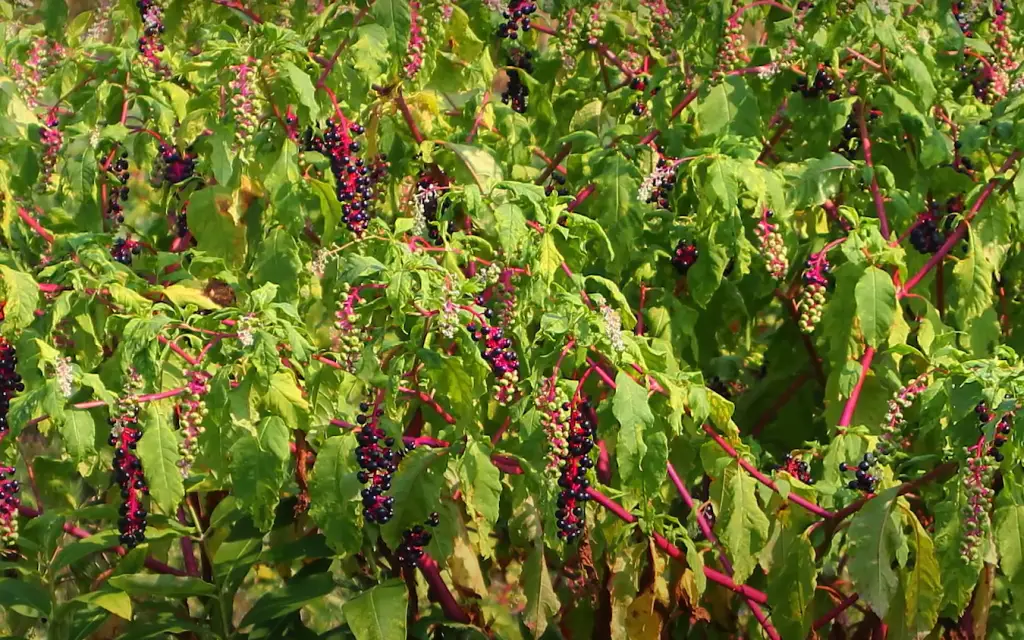
Himalayan balsam makes a great choice for adding height and texture to garden beds.[1]
Wineberry
Wineberry is a perennial shrub with red stems and attractive green foliage. It produces clusters of small white flowers in the summer that eventually turn into juicy, dark red berries. This plant grows best in full sun and prefers well-drained soil. Wineberry makes a great choice for wildlife gardens, as it attracts birds and other beneficial insects.[1]
Red Osier Dogwood
Red osier dogwood is a perennial shrub with bright red stems and white flowers. It grows best in moist, well-drained soil and full sun to partial shade. This plant makes an excellent choice for hedges or privacy screens, as it can reach heights of up to 10 feet. Red osier dogwood also attracts birds and other wildlife to your garden.[1]
FAQ
What plant has fuzzy red stems?
The Red Osier Dogwood is a popular choice for gardens with its fuzzy red stems and white flowers.
Why does my plant have a red stem?
Some plants, like the Elephant Bush and Wineberry, have red stems as part of their natural coloring. Red stems may also indicate that a plant is receiving too much direct sunlight or not enough water.
What do red stems mean?
Red stems may be an indication that a plant is receiving too much direct sunlight or not enough water. They can also indicate that a plant, such as the Elephant Bush and Wineberry, has natural coloring of red stems.
Why do my plants have purple stems?
If your plant has purple stems, it could mean that it’s not receiving enough light or that the soil is too acidic. You may want to move the plant to a spot with more light and/or adjust the soil pH level.
Are purple stems normal?
Purple stems are normal for certain plants, such as Common Purslane and Pokeweed. In fact, they are often a desirable trait in many garden plants.
What has a purple stem?
Common Purslane and Pokeweed are two popular garden plants with purple stems. Both of these plants prefer full sun and well-draining soil. They also produce attractive flowers that will attract beneficial insects to your garden.
Why are my tomato stems purple?
If your tomato plants have purple stems, it could be a sign that they are not getting enough calcium or magnesium in the soil. You can help remedy this by fertilizing with a fertilizer that is higher in calcium or adding some Epsom salt to the soil.
How do you treat purple stems?
If your plant has purple stems, it’s important to make sure it is receiving enough light and water.
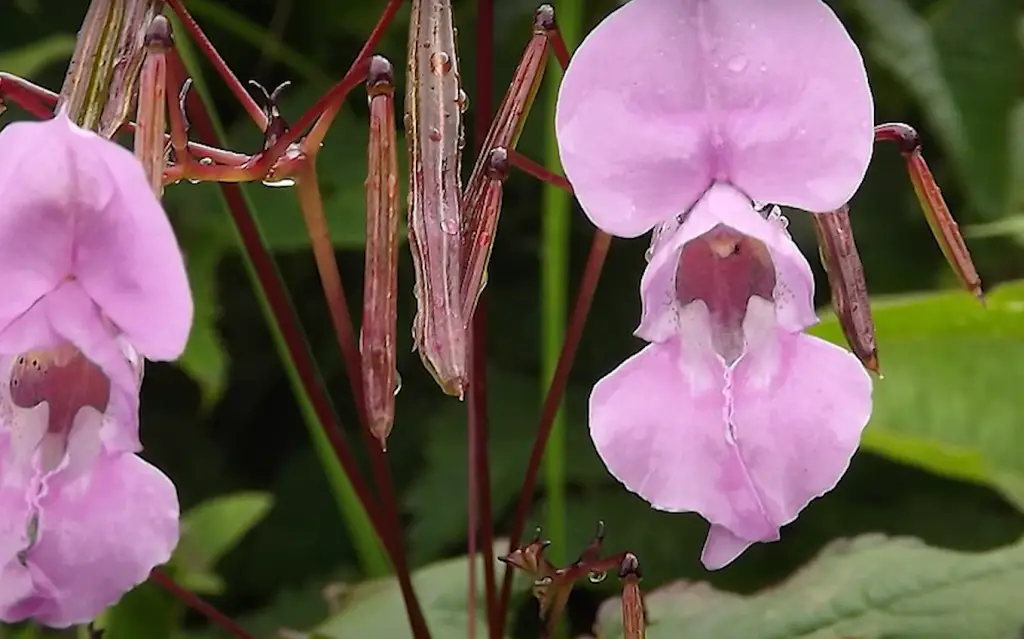
You may also want to adjust the soil pH levels and add some fertilizer with calcium or magnesium if needed. Additionally, adding Epsom salt to the soil can help treat purple stems.
Do tomato plants have purple stems?
Yes, some tomato plants can have purple stems. This is often a sign that there is not enough calcium or magnesium in the soil and you may need to adjust your fertilizer accordingly. You may also want to add some Epsom salt to the soil if needed.
What color are the stems of tomato plants?
Tomato plants typically have green stems with occasional hues of purple. This is usually an indication that the plant is not receiving enough calcium or magnesium in the soil, so it’s important to adjust your fertilizer accordingly. Additionally, adding some Epsom salt can help treat purple stems.
Useful Video:Most Popular Plants With Red Stems
Conclusion
Garden plants with red stems can be a great addition to any garden. They add beautiful color and texture, as well as attract beneficial insects to the area. It’s important to keep in mind that some of these plants may require special care or additional fertilizers, so it’s best to do your research before planting. With the right care, these plants can thrive and bring a stunning pop of color to any garden.
Happy gardening!
References:
- https://backgarden.org/plants-with-red-stems/
- https://horticulture.co.uk/red-stemmed-plants/





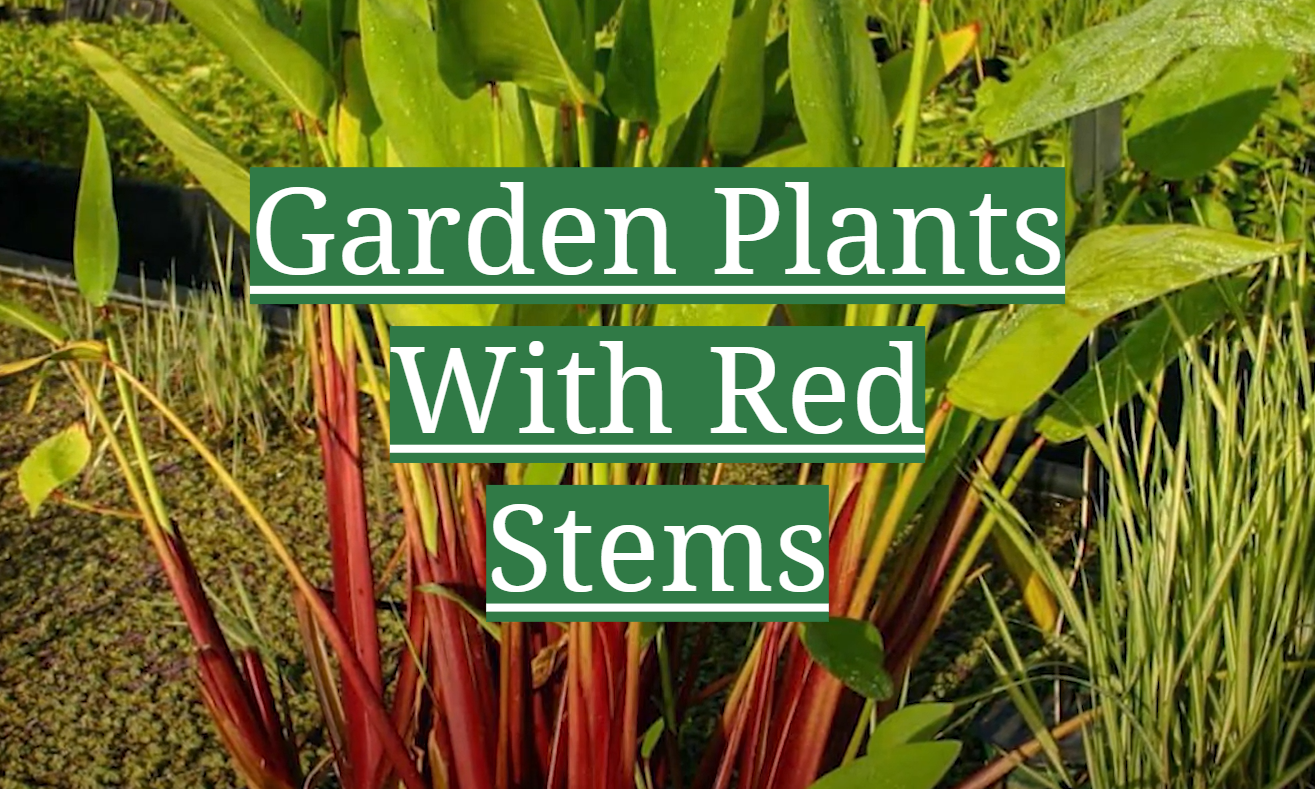




Leave a Reply
View Comments